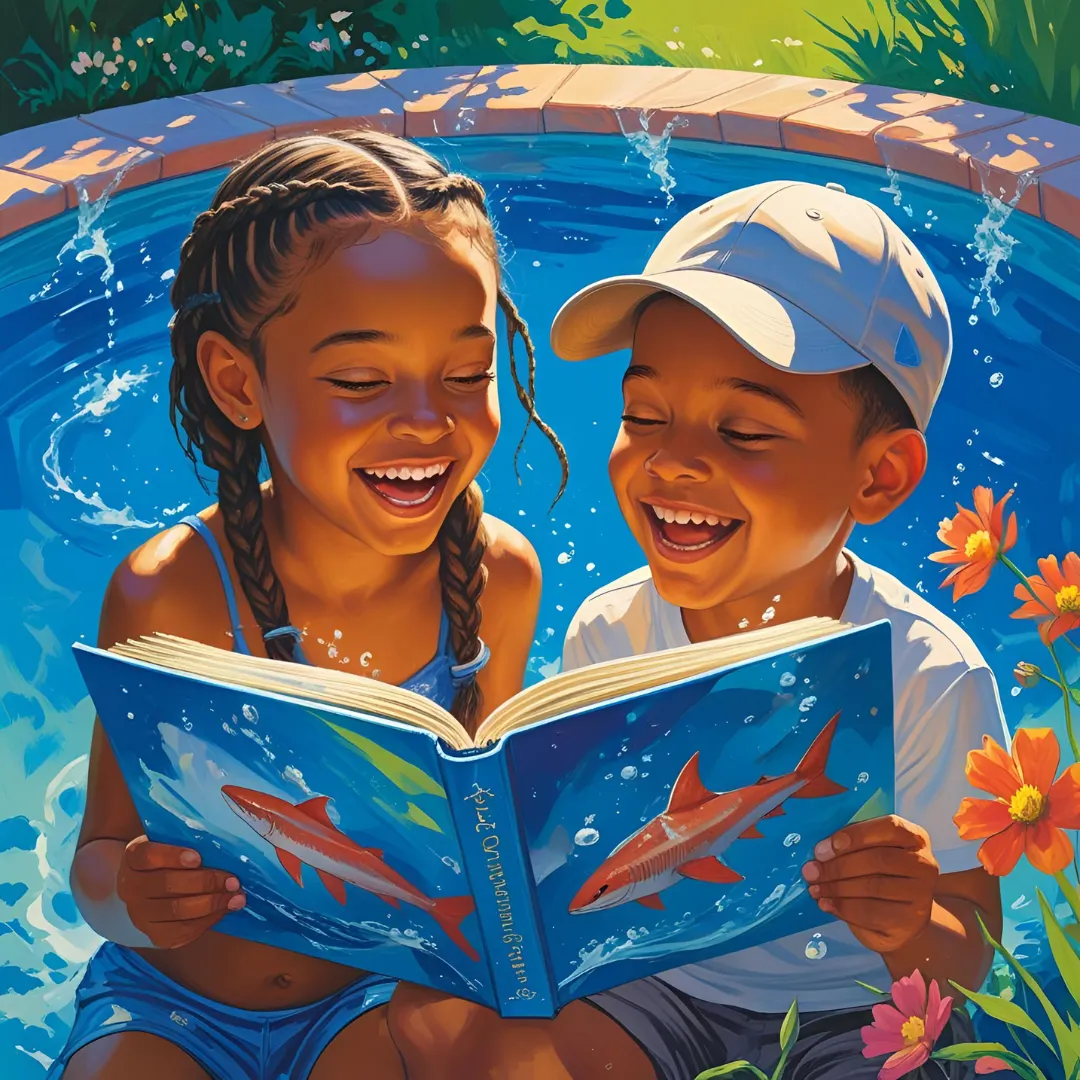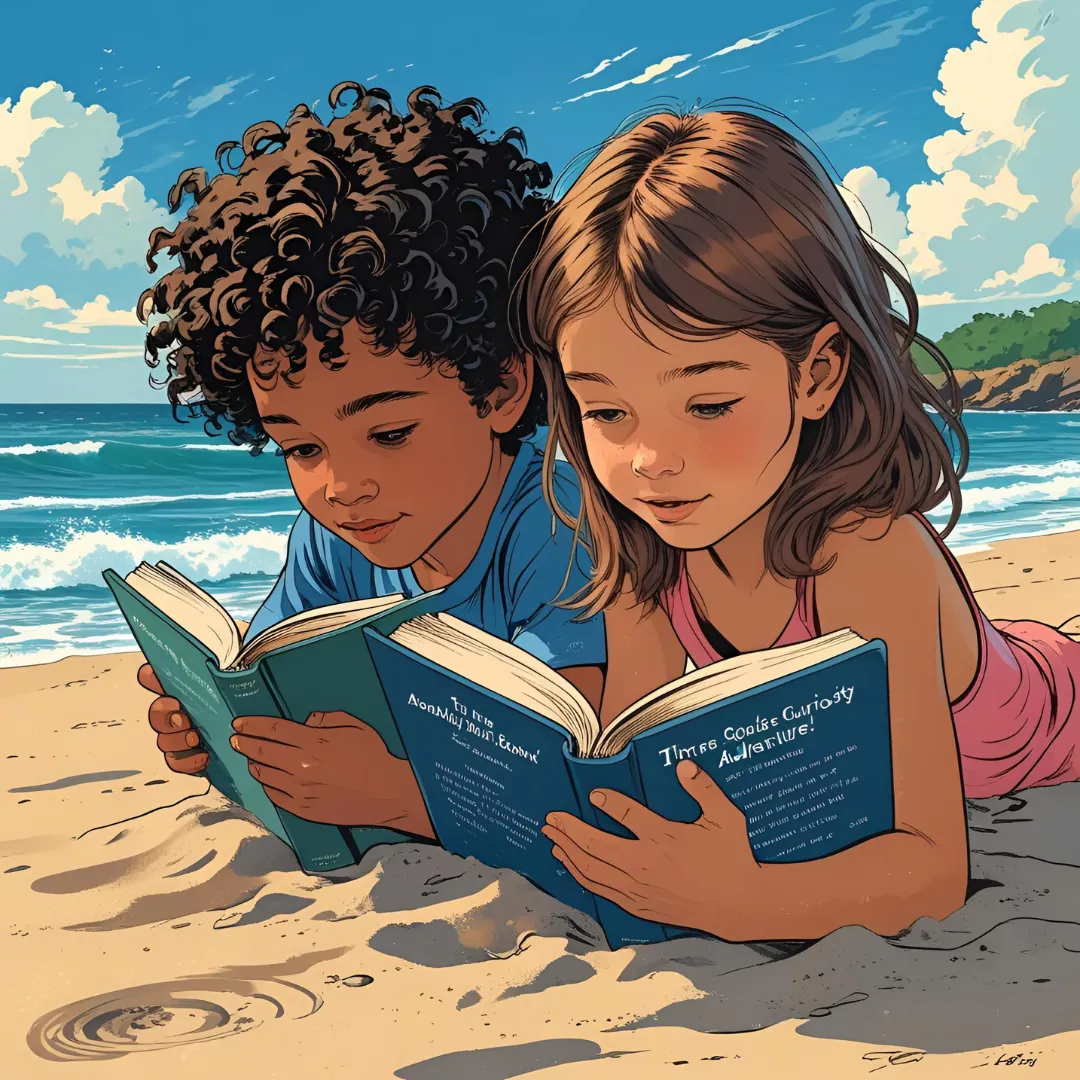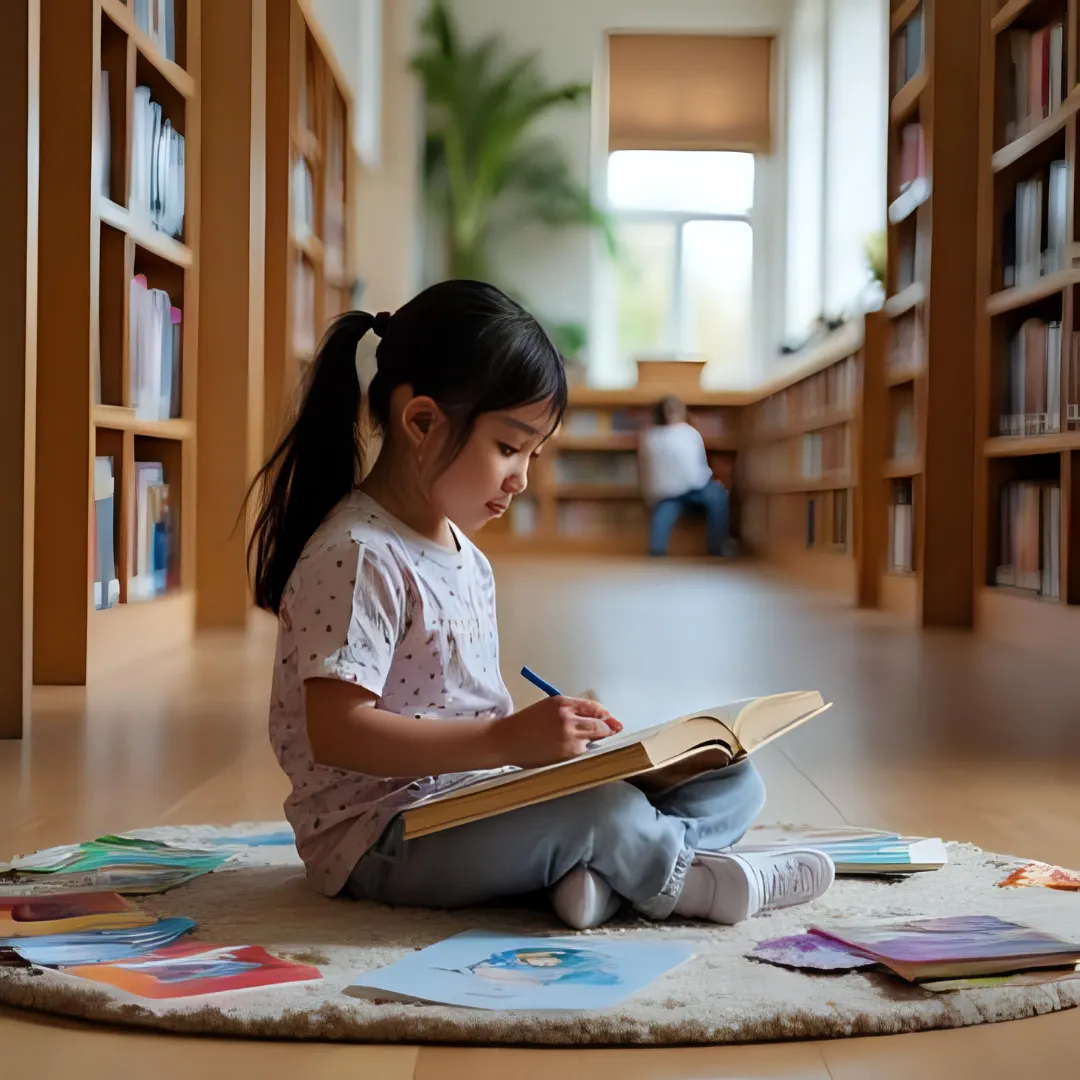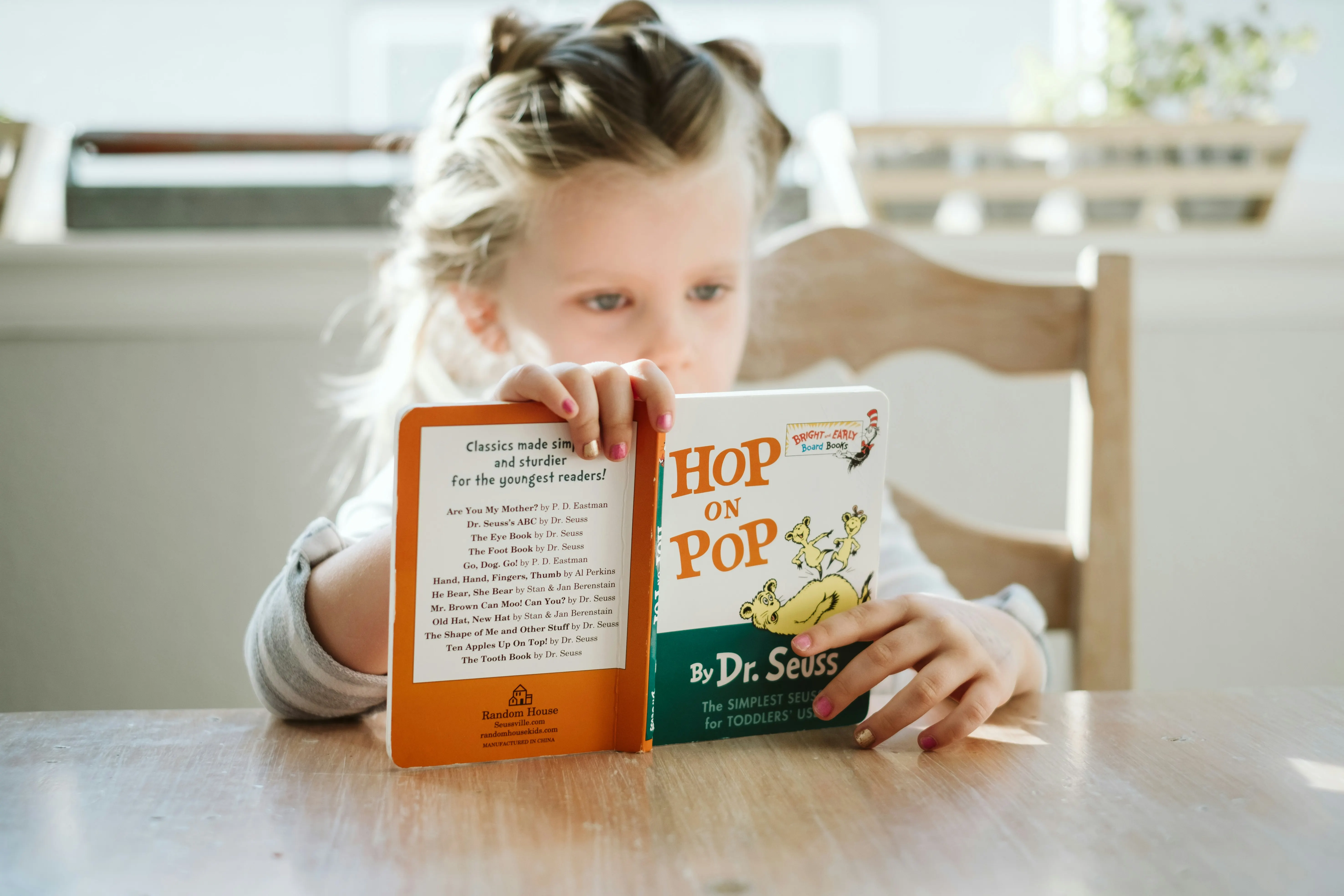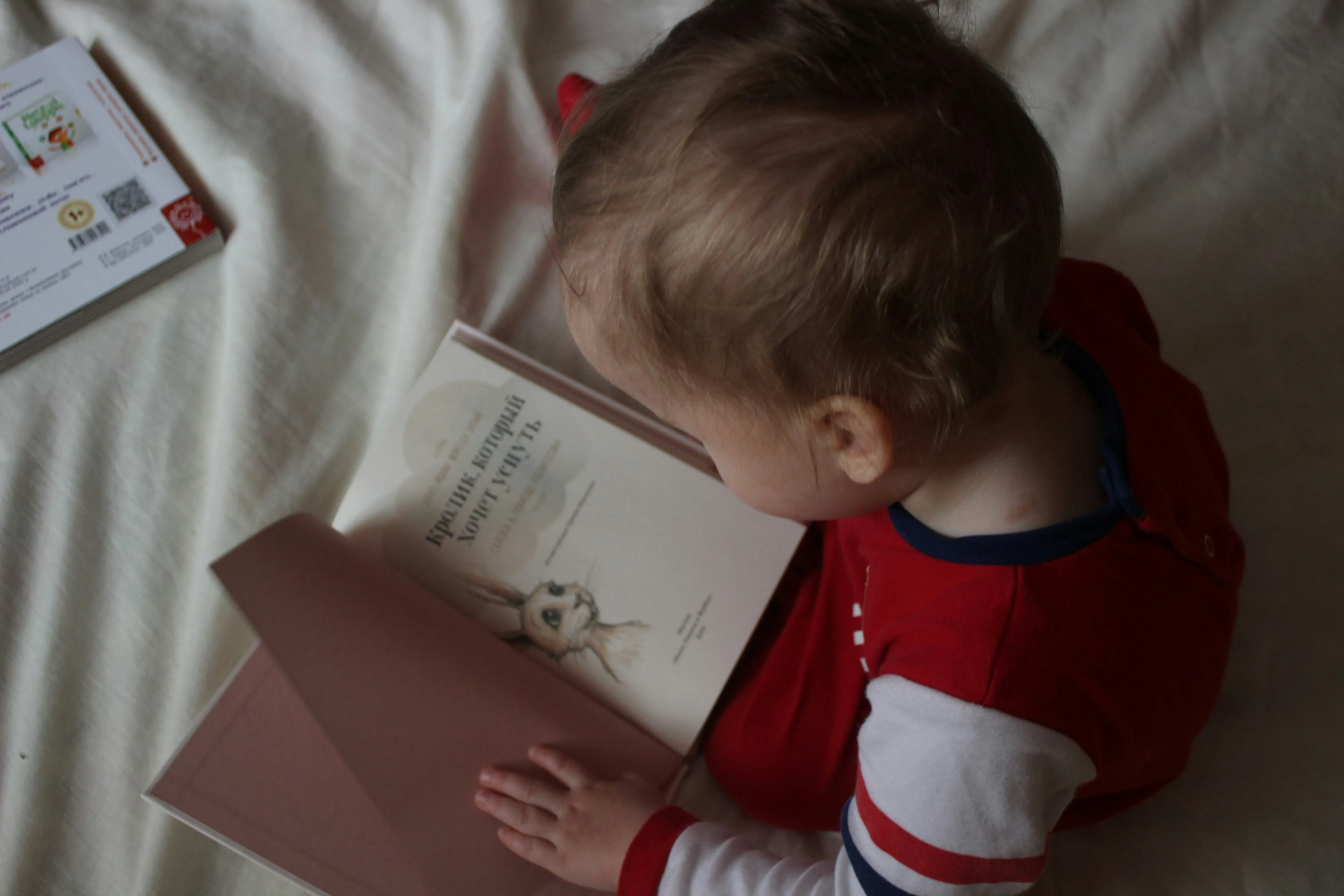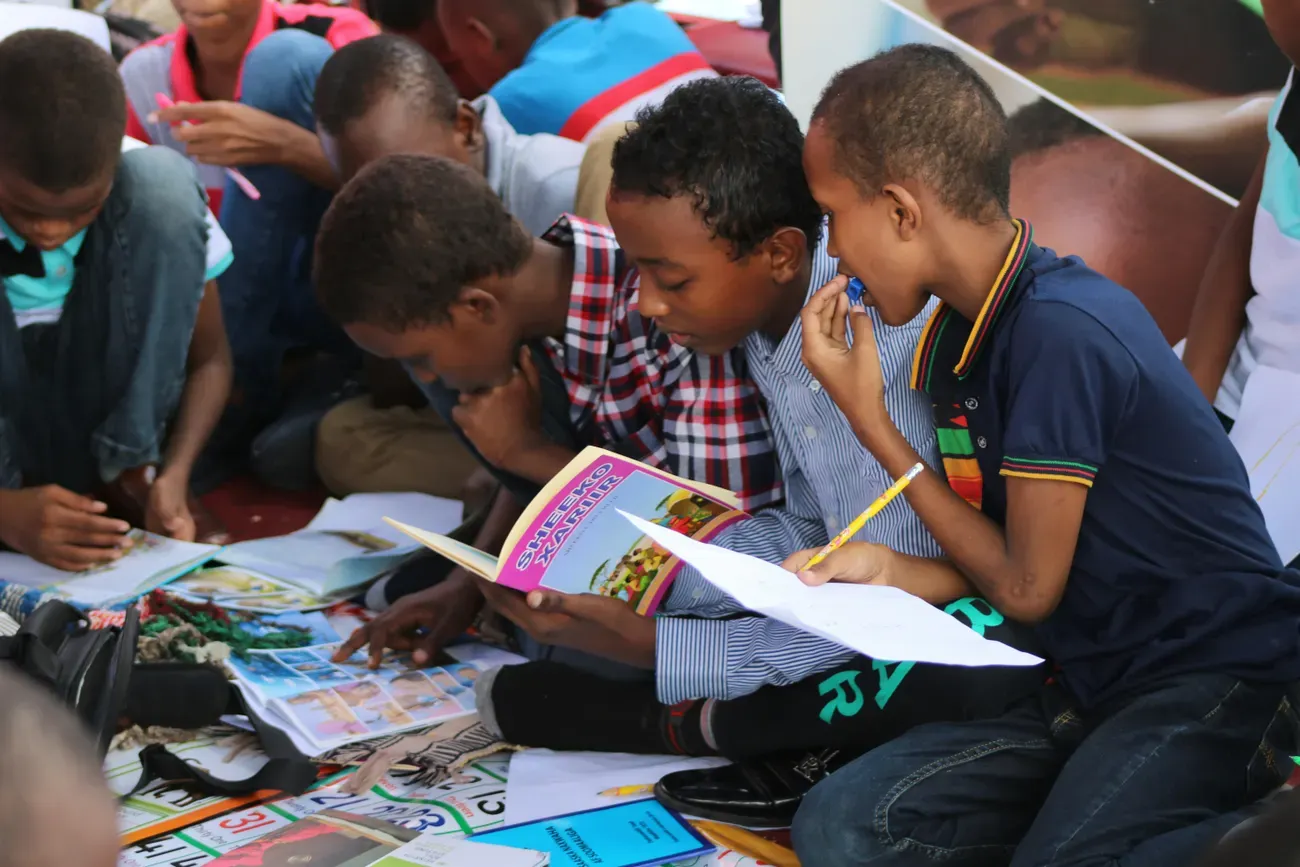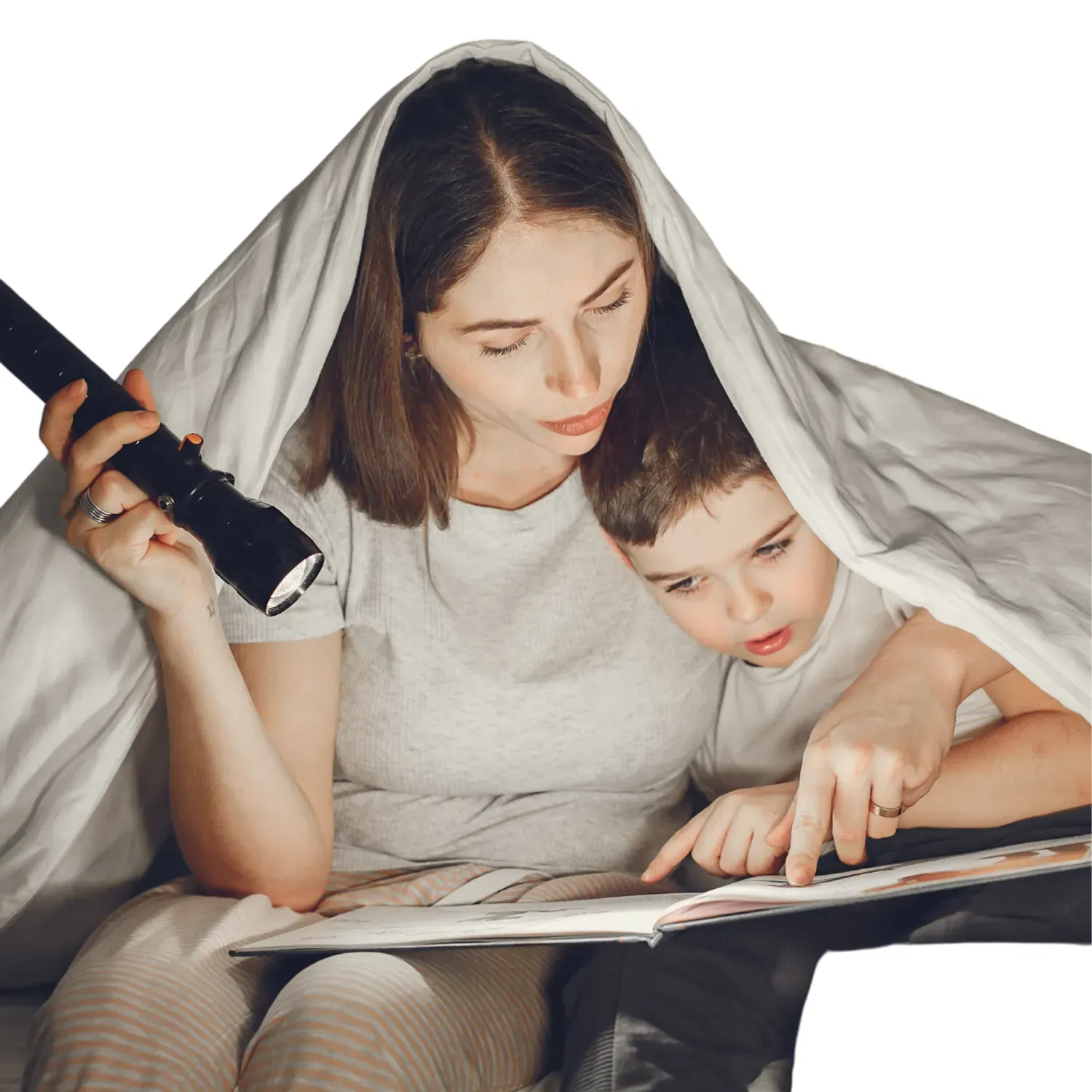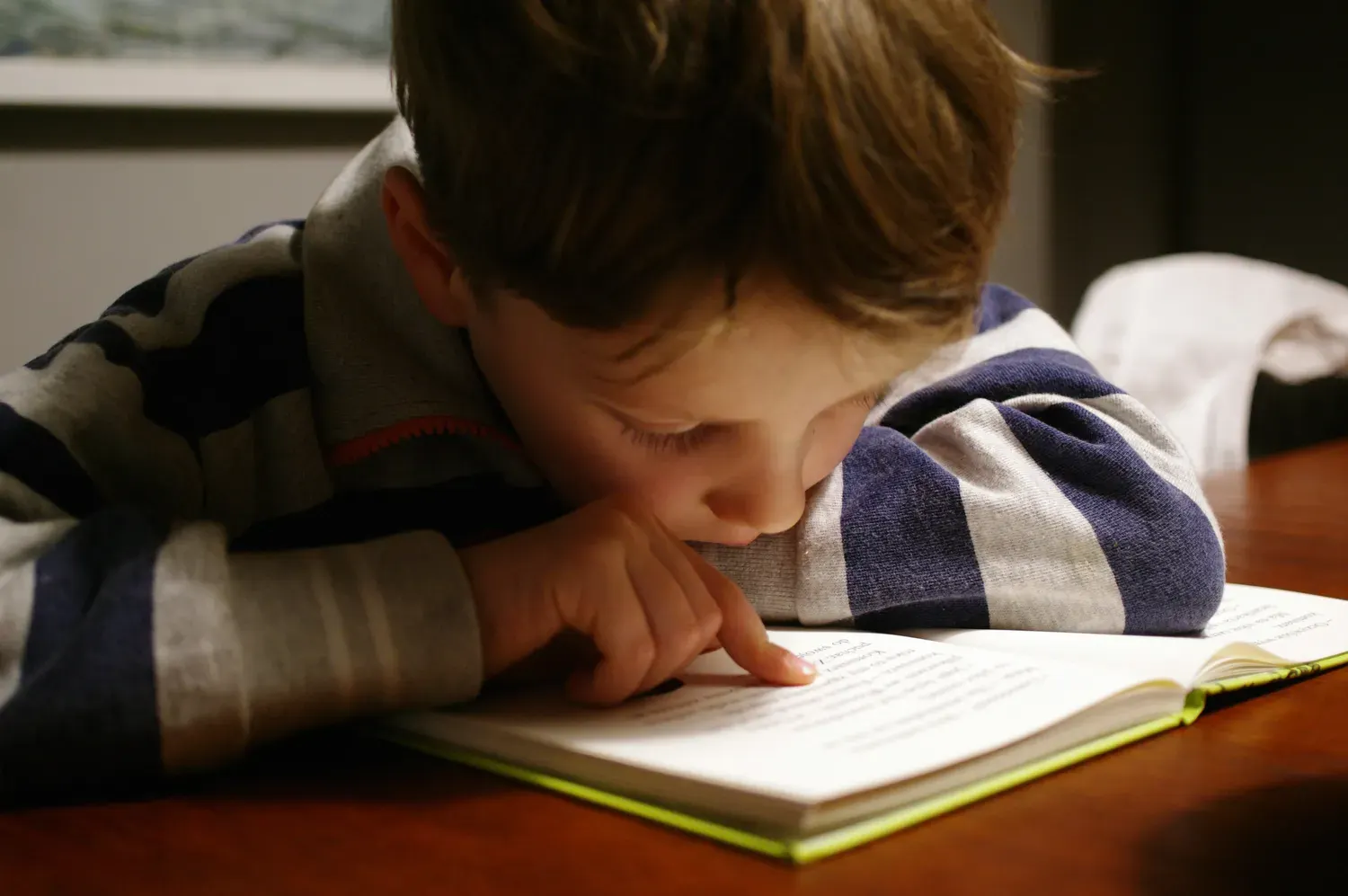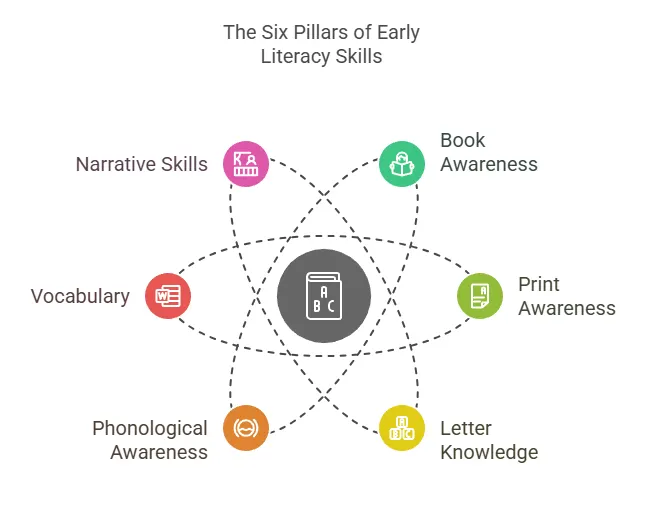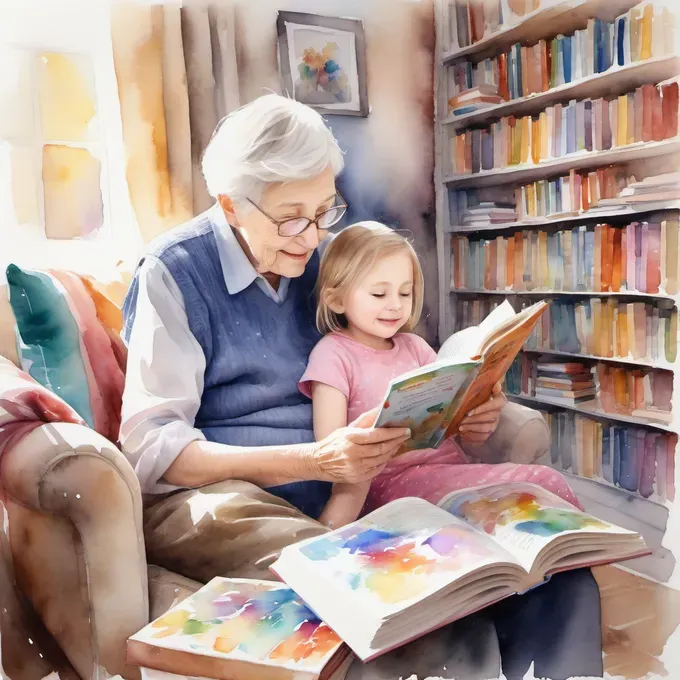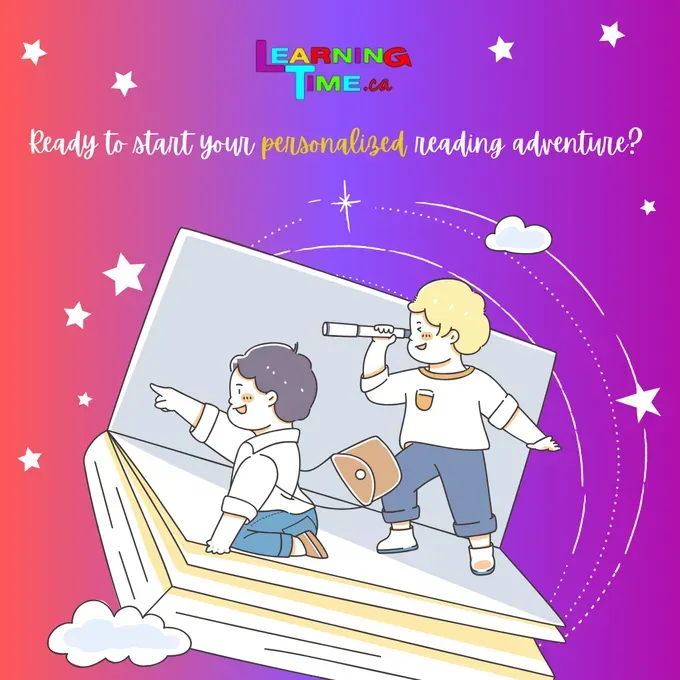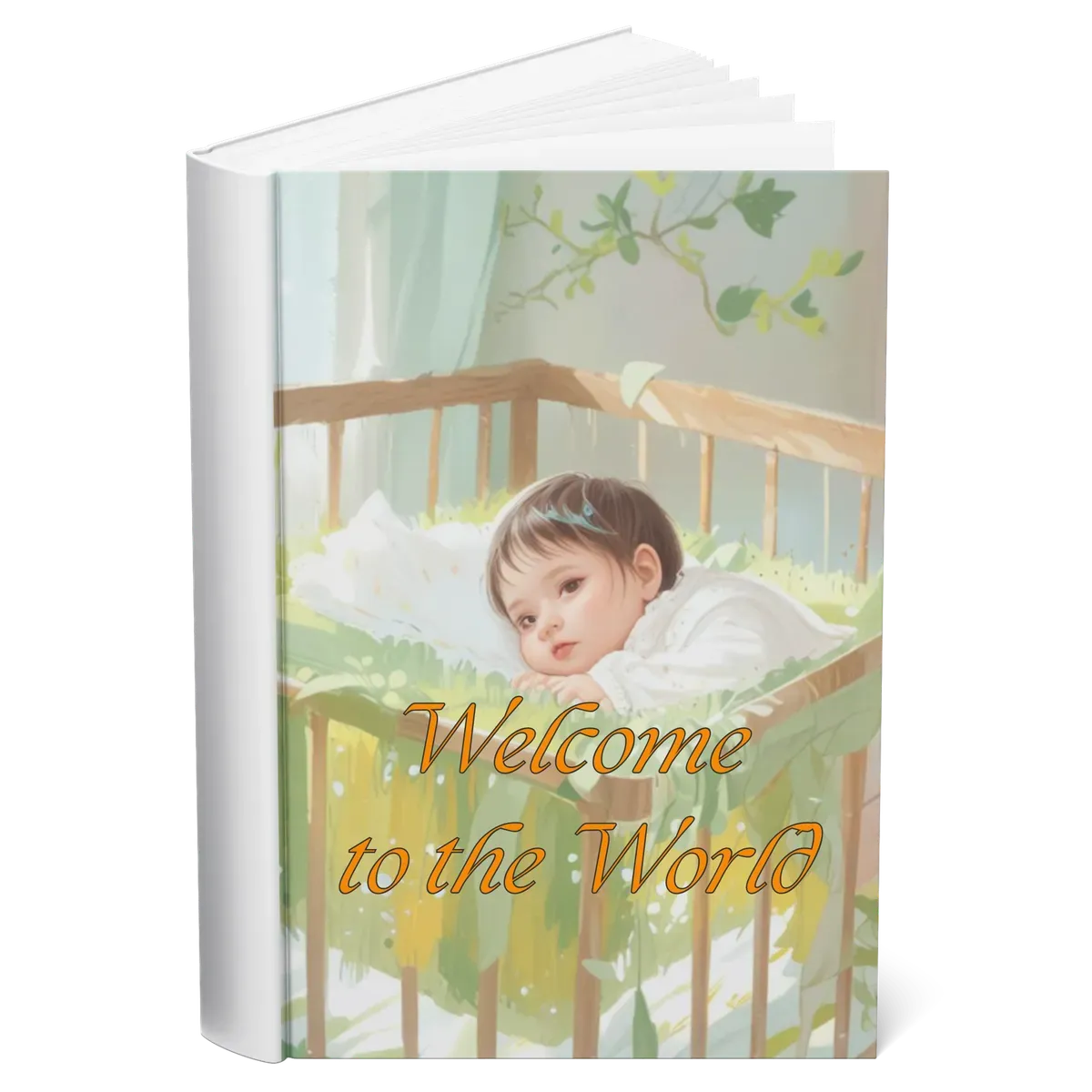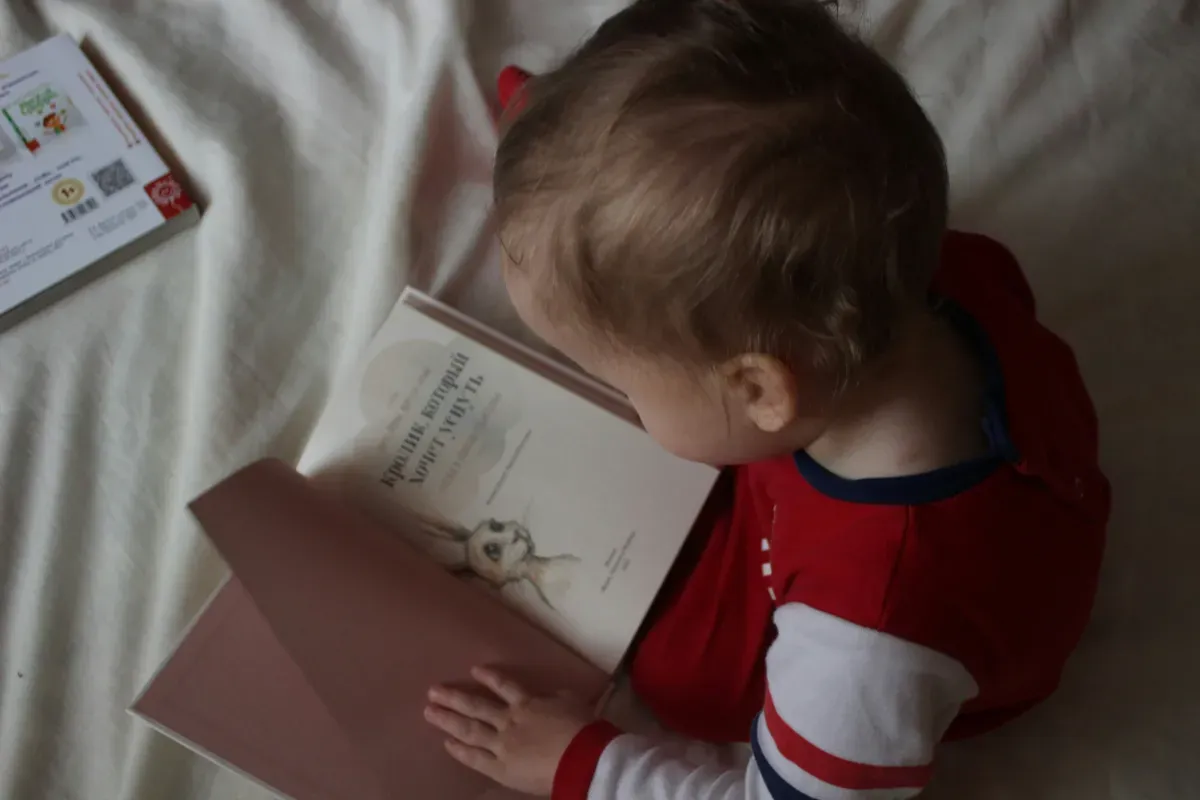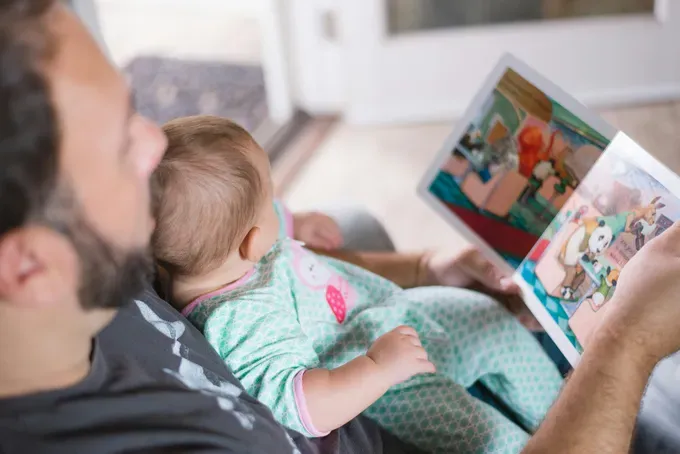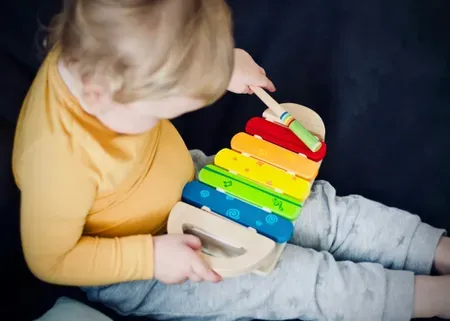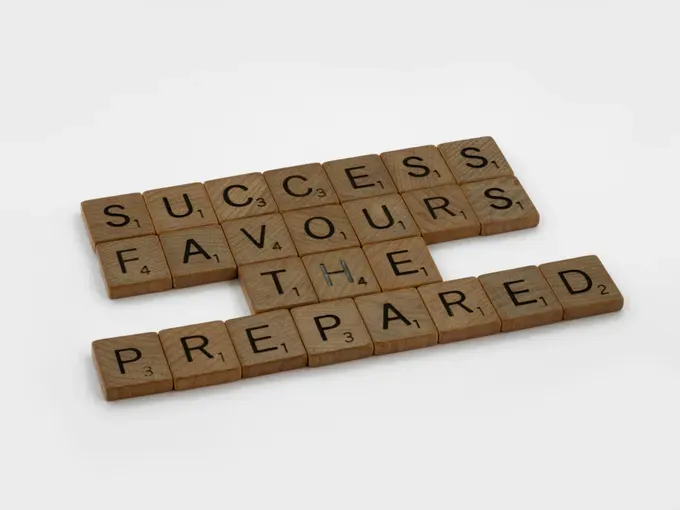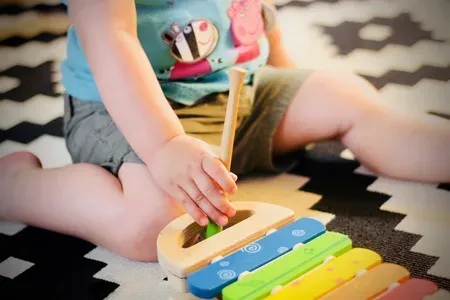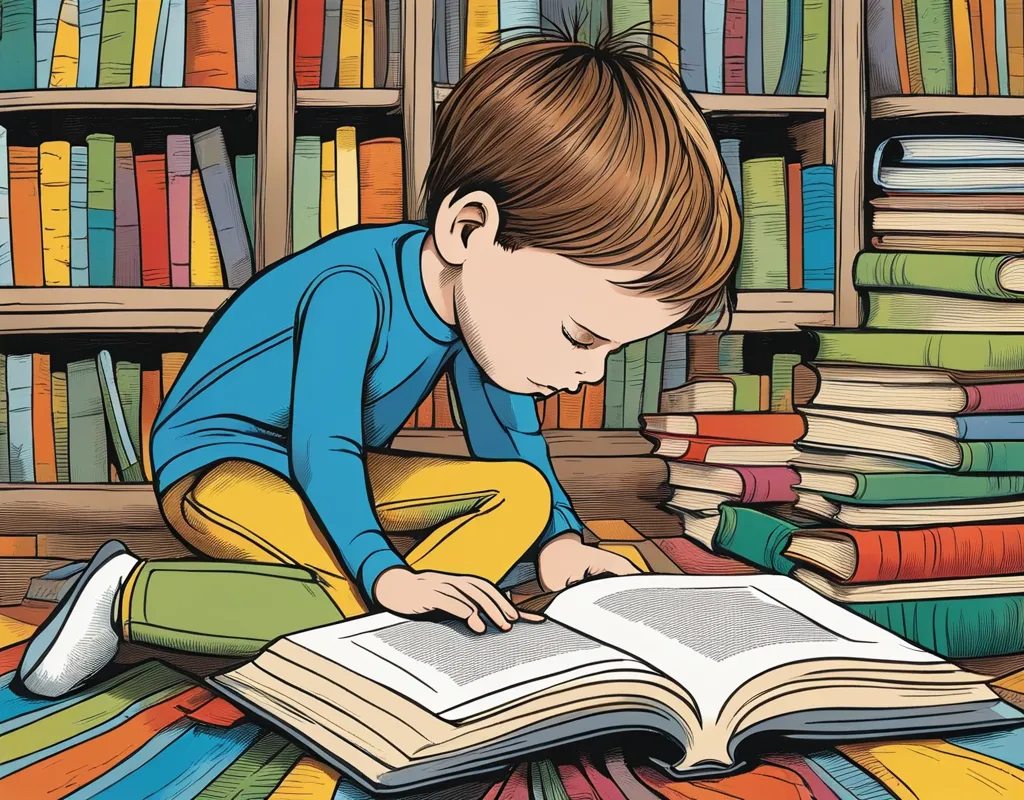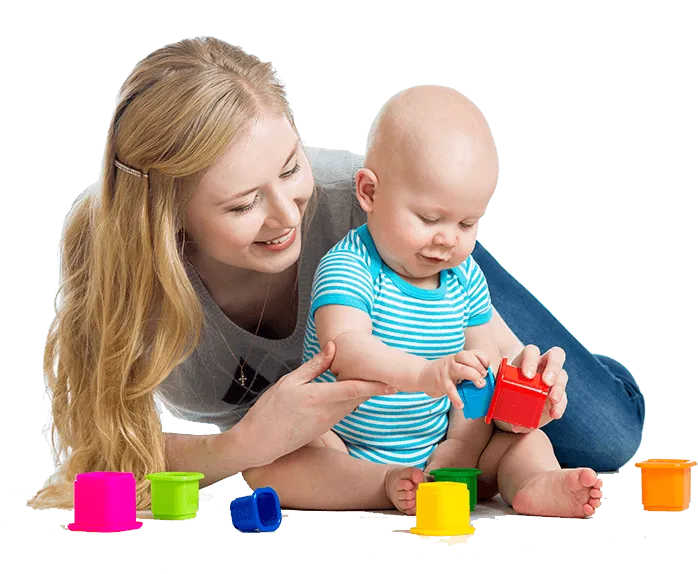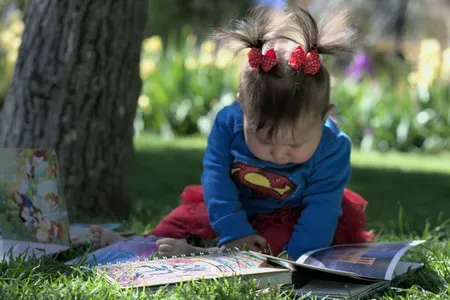Master Vocabulary Acquisition Strategies for Young Learners
Storytelling Techniques for Vocabulary
Acquisition
Key Highlights
- Storytelling is a captivating and effective way to expand vocabulary knowledge in children.
- Research in NLP highlights the significant role of storytelling in language acquisition and vocabulary development.
- Through descriptive language, synonyms, antonyms, repetition, and rhyme, stories create engaging environments for vocabulary growth.
- Interactive storytelling games and activities, like role-playing and story cubes, provide opportunities for children to actively use new vocabulary.
- Parents and educators can implement specific storytelling techniques and tailor them to different age groups for optimal vocabulary expansion.
Introduction
In learning a language, having a strong vocabulary is very important. Vocabulary knowledge includes being able to understand and use words. This knowledge is the foundation of good communication. Building this vocabulary is an ongoing effort. One great way to develop vocabulary is through storytelling. This method is especially helpful for young learners. Storytelling offers a fun and engaging way for kids to learn new vocabulary naturally. It also helps them love language from a young age.
Vocabulary Acquisition Strategies for Young Learners

Stories can take us to different worlds, show us interesting characters, and spark our imaginations. They are not just fun; they also help us grow our vocabulary, especially in children. Inside these stories, there is a mix of words that we can find and use.
When kids listen to stories or read by themselves, they find new words in a way that makes sense and sticks with them. This natural way of learning vocabulary within a fun story makes telling stories a great and enjoyable way for vocabulary development.

Effective word learning
One effective word learning strategy for young learners is to incorporate interactive and engaging experiences, such as educational apps and online tools, that promote vocabulary acquisition and retention.
Word Walls
One effective strategy for young learners to acquire vocabulary is through the use of word walls, which provide a visual reference of unknown words and encourage students to expand their knowledge and understanding of new vocabulary words.
Robust Vocabulary
To build a robust vocabulary in young learners, it is essential to provide them with rich and authentic contexts for learning new words, rather than relying solely on isolated vocabulary drills or definitions

The science behind storytelling and language acquisition
Storytelling has a strong effect on how we learn language. It helps our brains work better because stories activate many parts of the brain. When kids listen to stories, they try to understand the sounds and the meaning, and they picture what they hear. This all helps them gain new vocabulary.
Feeling emotions while listening to stories also helps kids learn new vocabulary. Stories can make them feel happy, excited, sad, or show empathy. These feelings catch their attention and make the experience stick in their minds, so they keep new vocabulary better.
How stories captivate and expand young minds
Young children are naturally curious and want to learn. They are open to the benefits of storytelling when it comes to expanding their vocabulary. Storytelling allows them to explore new worlds and ideas. It sparks their imagination and helps them enjoy language.
Stories help kids learn new words through exciting descriptions, characters, and plots. These elements catch their attention and make learning fun. When they hear words again and again in different stories, they start to understand their meanings. Over time, they add these new words to their vocabulary.
Also, storytelling gives children a safe space to practice using language. They can copy how their favourite characters speak. They can try new words when they tell their own stories. They can also ask questions to learn what unfamiliar words mean. All of this helps with their vocabulary growth and improves their language skills.
Essential Storytelling Techniques to Enhance Vocabulary
 To make the most of storytelling for building vocabulary, we need to use good storytelling methods. These methods do more than just share a story; they include smart ways to highlight new words, clarify their meanings, and get people involved with the language.
To make the most of storytelling for building vocabulary, we need to use good storytelling methods. These methods do more than just share a story; they include smart ways to highlight new words, clarify their meanings, and get people involved with the language.
By using these methods, we can change stories into exciting lessons about words. This can spark a love for language in young listeners.
Using descriptive language to build word knowledge
One great way to help grow vocabulary is by using colourful and detailed language. When storytellers create strong images with their words, they let kids not just listen to the story but also see, smell, taste, and feel it. This hands-on experience helps improve word knowledge more than just knowing a simple meaning.
For example, instead of saying "The bird flew away," a storyteller might say, "The red-breasted robin opened its wings wide, flew into the blue sky, and disappeared like a whisper in the wind." Using descriptive words like "red-breasted," "blue," and "whisper" creates a clearer picture, making the vocabulary instruction stick in their minds.
Incorporating synonyms and antonyms through narratives
Stories are a fun and natural way to teach synonyms and antonyms. They help children learn new words. When storytellers use words that mean the same or the opposite, it broadens a child's vocabulary and helps them understand how words are connected.
For example, if a story calls a character "brave" and later says the same character is "courageous," kids can see that these words mean similar things. On the other hand, if a story shows one character as "generous" and another as "stingy," it clearly shows the idea of antonyms.
The role of repetition and rhyme in learning new words
Repetition and rhyme are important parts of how young children learn language. They help kids pick up new vocabulary. Many children's stories use repetitive phrases and rhyming lines. This helps children remember unfamiliar words easily.
The rhythm of rhyming words sounds nice to kids. It helps them memorize and recall words better. When children hear a new word repeated in fun rhymes or phrases, it sticks in their memory more firmly.
But it’s not just about memorizing words. Repetition and rhyme in stories help kids grow their phonological awareness. This means they can recognize and play with sounds in language. As a result, it helps with their reading and spelling skills. It becomes easier for children to understand new words they see in books.
Interactive Storytelling Games for Children
 Interactive storytelling games and activities go beyond just listening. They let children use new vocabulary in a fun way. This helps them understand and remember words better. By making stories into hands-on activities, we allow kids to take part in their vocabulary learning.
Interactive storytelling games and activities go beyond just listening. They let children use new vocabulary in a fun way. This helps them understand and remember words better. By making stories into hands-on activities, we allow kids to take part in their vocabulary learning.
These fun activities make learning exciting. They also support different learning styles. This means that every child can learn and hold onto new vocabulary in a way that suits them best.
Role-playing games that boost vocabulary
Role-playing games are great for helping kids grow their vocabulary. They can pretend to be different characters and use new words in fun ways. By taking on a character, children act out the words. They also learn what those words mean and how to use them correctly.
When kids act like brave pirates, clever wizards, or caring doctors, they mix new vocabulary into their conversations. They also practice different skills, like voice tone, expression, and body movements. This hands-on way of learning helps them understand words better than just memorizing definitions.
Plus, role-playing boosts creativity and teamwork. It makes learning vocabulary more fun and exciting. This way of learning not only increases new vocabulary but also develops important social skills, like communication, empathy, and problem-solving.
Story cubes and word banks
Story cubes and word banks are great tools for sparking creativity. They help children tell their own stories while also building their vocabulary. Story cubes usually have different images on each side. Kids can roll them and make up a story based on the pictures.
To help with vocabulary development, parents or teachers can make a list of related words to use with the story cubes. For example, if the story is about going on an adventure in the jungle, the word bank could have words like "lush," "canopy," "creature," "explorer," and "exotic."
By encouraging kids to use at least one word from the word bank in every sentence or paragraph, they learn to add these new vocabulary words to their stories. This helps them think about the words and their meanings more clearly. As a result, they gain a better understanding and remember the new vocabulary better.
Digital storytelling apps suitable for children
In today's world, educational technology provides new and fun tools for learning vocabulary through storytelling. Many digital storytelling apps are made for children. They use interactive features, great visuals, and sound to make learning exciting.
These apps usually have cool tools like interactive dictionaries. They show hard words in the text and give simple meanings when you click on them. Some apps even read the story out loud, helping kids with vocabulary learning and reading skills.
When children use digital storytelling apps, they can improve their digital skills. At the same time, they can grow their vocabulary knowledge and build a love for reading and storytelling for life.
Age-Appropriate Vocabulary Expansion Through Stories
 Just like children grow and change at their speed, their vocabulary should do the same. It's very important to let children hear stories with words that match their age. This helps them understand better and enjoy reading. Very simple stories might not help them learn new words. On the other hand, stories that are too hard can make them feel frustrated and want to stop reading.
Just like children grow and change at their speed, their vocabulary should do the same. It's very important to let children hear stories with words that match their age. This helps them understand better and enjoy reading. Very simple stories might not help them learn new words. On the other hand, stories that are too hard can make them feel frustrated and want to stop reading.
We can help kids love language by choosing books that use words a little harder than what they know now. This gives them a good challenge. We want them to grow, but not feel stressed out by the reading. This way, reading can be fun and exciting for them.
Tailoring vocabulary complexity based on age
Matching the difficulty of vocabulary to a child's age and grade level is very important for good vocabulary development. For young children, stories that use simple words, repeated phrases, and sounds help build their language skills. As children move up in grade levels, the vocabulary in their reading should become a bit more complex.
Adding more complex sentences, figurative language like similes and metaphors, and words with different meanings can help them better understand the many sides of language. This also prepares them for tougher texts later on. However, it is key to find the right level of challenge without losing comprehension.
While it is essential to add new and challenging words for vocabulary growth, children must grasp the main idea of the story, too. If a story has too many unfamiliar words, they could lose sight of the plot and feel frustrated.
Stories and books recommended for different age groups
For toddlers and preschoolers, it is best to choose books that use simple words, repeated phrases, and colorful pictures. Some classic books for these kids are "The Very Hungry Caterpillar" by Eric Carle, "Goodnight Moon" by Margaret Wise Brown, and "Chicka Chicka Boom Boom" by Bill Martin Jr. and John Archambault. These books help young children to learn basic vocabulary and sentence patterns, building a strong start for their language skills.
As kids grow into early elementary grades, their reading skills improve. They can enjoy stories that are more complex. Recommended books for this age group often have longer sentences, chapters, and interesting plots with characters they can relate to. Popular choices include the "Frog and Toad" series by Arnold Lobel, the "Magic Tree House" series by Mary Pope Osborne, and the "Junie B. Jones" series by Barbara Park.
For upper elementary and middle school students, book recommendations often deal with more grown-up themes. These books may have a richer vocabulary and cover different genres. Timeless favorites in this group include the "Harry Potter" series by J.K. Rowling, "The Chronicles of Narnia" series by C.S. Lewis, and "Wonder" by R.J. Palacio. These selections test their vocabulary knowledge and encourage critical thinking and emotional growth.
Evaluating vocabulary progress in children
Assessing vocabulary progress is crucial to ensure that children are on track with their language development and to identify any areas where they might need additional support. While standardized tests can provide a general overview of vocabulary knowledge, it's essential to employ a variety of assessment tools to gain a comprehensive understanding of a child's vocabulary development.
Informal assessments, such as observations during storytelling, role-playing, or casual conversations, offer valuable insights into a child's ability to use new vocabulary naturally and effectively. Creating a vocabulary journal can also be a useful tool. Encourage children to jot down new words they encounter, along with their definitions, synonyms, antonyms, and example sentences. This not only reinforces their vocabulary learning but also provides a tangible record of their progress.
Here's a simple table highlighting different assessment methods:

The Impact of Parental Involvement in Storytelling
 Parents have a key role in helping kids love language and build their vocabulary. It's more than just reading bedtime stories. When parents get involved, everyday moments can turn into fun chances to explore language.
Parents have a key role in helping kids love language and build their vocabulary. It's more than just reading bedtime stories. When parents get involved, everyday moments can turn into fun chances to explore language.
They can make use of storytelling in their conversations, ask important questions, and create a home that is full of language. This way, parents can spark a love for words that goes way past what’s in a book.
Techniques for parents to tell engaging stories
Parents can use different storytelling methods to make their stories fun and helpful for vocabulary development. One good way is to change their voice tones and sounds for different characters and parts of the story. By highlighting certain words, changing the speed, and using long pauses, parents can grab their children's attention and make the story stick in their minds.
Using facial expressions, hand movements, and even puppets or props can make storytelling even better. This makes it more interactive and visually interesting.
Asking open-ended questions during the story is another great method. Instead of just reading the text, parents can stop at times and ask questions like, "What do you think will happen next?" or "What would you do if you were the main character?" This not only checks if kids understand but also helps them connect more with the story and think about the words more deeply.
Creating a reading routine at home
Having a regular reading routine at home is important. It helps with vocabulary development and builds a love for reading that lasts a lifetime. Choosing a specific time each day, like after dinner or before bed, makes reading a fun and relaxing activity for children.
Making a cozy reading corner with books that are right for their age can make reading even more enjoyable. This special spot shows kids that reading is important. It also gives them a comfortable place to get lost in stories and learn new words.
Getting the whole family involved in reading is also helpful. When parents, siblings, or grandparents take turns reading aloud, kids see different styles of reading. This not only builds their vocabulary but also creates great family memories and strengthens bonds.
Parent-child interactive storytelling methods
Interactive storytelling is a great way for parents and children to connect while helping boost vocabulary skills. One fun idea is to play "fill in the blanks" during story time. Parents can leave out important words and ask their kids to suggest fitting ones.
Another fun technique is to let kids draw pictures from the story. This helps them understand the story better and links words to images, which improves their vocabulary knowledge.
Talking about the story after reading is also very important. Discussing the characters, the plot, and the story's messages gives children a chance to use new vocabulary. It also helps them build critical thinking skills.
Cultural Stories and Their Role in Vocabulary Building
 Cultural stories passed down over time are full of valuable language. These stories show the values, beliefs, and traditions of many cultures. They give children a chance to see different perspectives and help them understand the world better.
Cultural stories passed down over time are full of valuable language. These stories show the values, beliefs, and traditions of many cultures. They give children a chance to see different perspectives and help them understand the world better.
When children read stories from various cultures, it helps them learn new words and phrases. This can make their vocabulary larger. It also helps them see the beauty in different languages. They can learn where words come from and appreciate how people’s experiences are connected.
Exploring diverse cultures through stories
One great benefit of storytelling is that it takes us to different places around the world. We can learn about languages, customs, and views from various cultures. Cultural stories, filled with history and wisdom, help kids grow their vocabulary and connect with different backgrounds.
When children read stories from different cultures, they find many new words. These can include names of traditional foods, clothing styles, and descriptions of different places and special events. Learning this new vocabulary not only boosts their language skills but also helps them understand the world better. It makes them more caring and respectful towards other cultures.
Storytelling acts like a bridge. It links children to different parts of the world. This connection builds a sense of being a global citizen and helps them appreciate the richness and diversity of human experiences.
Multicultural storytelling techniques
To make multicultural storytelling more impactful, using certain storytelling techniques can improve both engagement and vocabulary knowledge. One good method is to research and add cultural details to the stories. This can include using the correct pronunciation of foreign words and names. You can also explain why certain objects or traditions are important in the culture. Adding traditional music or dance from that culture can also help.
Another helpful idea is to bring in guest storytellers from various cultural backgrounds. Hearing stories from people who have truly lived that culture makes the experience more real and heartfelt.
Also, encouraging children to share stories from their own families and backgrounds makes the storytelling circle richer and more diverse.
Learning new words through cultural context
Learning new vocabulary within its cultural context helps kids understand words better. Instead of just memorizing definitions, children learn how words are used in real-life situations. This makes their vocabulary learning more meaningful.
For instance, a story about Japan might introduce kids to words like "origami," "kimono," and "samurai." When they see these words in the story, they better understand what they mean and how important they are to the culture.
Talking about the cultural background of new vocabulary also helps children link language to culture. This builds empathy and respect for different ways of life. It encourages discussions about diverse customs, traditions, and beliefs, helping kids appreciate the richness of human experiences.
Leveraging Technology in Storytelling for Vocabulary Growth
Technology provides new tools and platforms to help kids grow their vocabulary through storytelling. There are interactive e books full of multimedia features and language learning apps made to keep young learners interested. This digital world gives many chances to learn.
When used well, technology can change storytelling into a lively and engaging experience. It can grab kids' attention and make learning new words more enjoyable and successful.
Choosing the right technology tools for storytelling
With many technology tools available, picking the right ones for vocabulary instruction through storytelling needs careful thought. Not all apps or platforms are the same. Some may work better than others based on a child's age, learning style, and specific vocabulary goals.
When selecting technology tools for storytelling, it's key to choose high-quality content. It should be engaging, suitable for the age group, and rich in language. Look for apps or platforms that have interactive features, like dictionaries, audio recordings by professional voice actors, and chances for children to record their voices and share stories.
Also, make sure the technology tools you choose fit with your teaching style and help your vocabulary instruction goals.
Benefits of multimedia stories for vocabulary learning
Multimedia stories, which include images, sound effects, and animations, have many benefits for learning new vocabulary. These stories use videos, songs, and interactive games. This variety helps different types of learners and makes it easier to learn new words.
Visual learners enjoy seeing pictures and animations that show new vocabulary words. Auditory learners understand meanings better with sound effects and music. Also, the interactive part of multimedia stories keeps kids engaged and helps them remember new vocabulary.
By mixing visuals, sounds, and interactivity, multimedia stories provide a complete learning experience. They support different learning styles and improve how well kids understand and remember new vocabulary.
Interactive e-books and their impact on vocabulary
Interactive e-books have a big impact on vocabulary development. They change the usual reading experience into an exciting journey. Unlike regular print books, interactive e books have helpful features. These features boost understanding, encourage active reading, and make learning new vocabulary more enjoyable and easier.
Many interactive e-books include built-in dictionaries. These dictionaries give child-friendly definitions for unfamiliar words with just one touch. This quick access to definitions helps kids understand better. It also allows them to learn new words as they read the story.
Also, interactive games, quizzes, and activities in these e books help with vocabulary learning. They keep children excited about the material. By making reading more engaging and fun, interactive e books can spark a love for digital reading and help with vocabulary acquisition.
Strategies for Educators to Foster Vocabulary Through Stories
Educators have a special role in helping students love language and build strong vocabularies. Using storytelling in lessons is a fun and helpful way for vocabulary development. It makes classrooms lively and exciting for exploring language.
By using certain storytelling methods, adding interactive activities, and using technology, educators can make learning enjoyable. This sparks a love for words and helps students become clear communicators.
Classroom storytelling techniques
Educators can use some great classroom techniques to strengthen storytelling for teaching vocabulary. One fun way is by having reader's theater activities. In this, students play different characters and read aloud from scripts or adapted stories. This interactive method helps build fluency, expression, and confidence while also boosting vocabulary knowledge.
Another useful technique is to add visual aids like props, costumes, or puppets to storytelling. These visuals help show new words and ideas, which helps students who learn best with pictures. This makes the learning experience more memorable.
It's also important to encourage students to join in through questions and discussions. When educators ask open-ended questions or invite students to predict what happens next, they promote deeper thinking. This active participation helps with vocabulary development and keeps students engaged with the language.
Integrating storytelling into the curriculum
Storytelling is not just for language arts classes. It can fit well into many different subjects and can make lessons richer. For example, in social studies, teachers can use historical fiction or biographies. This approach helps bring historical events and people to life. It also introduces vocabulary related to periods, cultures, and important events.
In science, stories can help explain new scientific ideas, natural occurrences, or details about various plants and animals. This adds vocabulary connected to those topics. Math classes can also benefit from storytelling. Teachers can create word problems that relate math ideas to real life. This way, they introduce vocabulary about measurements, shapes, and math operations.
When teachers use storytelling in different subjects, they make learning more complete. It becomes more relevant and memorable. This helps students understand both the subjects and the related vocabulary better.
Assessment tools for vocabulary development
Effective vocabulary development needs regular checking to see how students are doing. This helps to find their strengths and weaknesses and plan future lessons. While typical vocabulary tests are helpful, using more fun and real-life assessment tools can give a better view of what students know about words and how they use new vocabulary in different situations.
One fun way to assess vocabulary is to have students write their own stories using certain vocabulary words. This lets them show their understanding of what the words mean, use grammar rules, and be creative.
Another good way to assess is to watch students during class talks, group work, or individual presentations. It's important to focus on their choice of words, how smoothly they speak, and how comfortable they are using new vocabulary. These informal checks give good insights into a student's vocabulary development in a more relaxed setting.
You Might Also Like:
Vocabulary Power: Opening the Door to Reading Success
Phonological Awareness: The Symphony of Language Learning
Tales, Teaching, and Tiny Voices: The Power of Early Narrative Skill
Conclusion
Storytelling is a strong way to build vocabulary and attract young minds. Using descriptive words, synonyms, and repetition in stories helps kids learn more words. Parents and teachers are important for helping vocabulary growth by sharing fun stories and games. Changing stories for different ages and cultures helps with learning a language. Using technology like interactive e books can also help increase vocabulary. By making a positive space that celebrates storytelling, we can encourage children to enjoy language diversity and succeed in their journey with words.
Frequently Asked Questions
What are the best storytelling techniques for toddlers?
The best ways to tell stories for toddlers are important for their early childhood growth. These techniques include repeating ideas, using strong voices, and showing bright pictures. It helps to use their names in the stories. Encouraging them to make animal sounds or say phrases again keeps them interested and helps with their vocabulary knowledge.
How often should stories be used for vocabulary lessons?
Using stories in vocabulary lessons should not happen just at certain times; it should happen all the time. Adding stories to daily activities, using them in different subjects, and letting them lead to discussions is an effective way to teach vocabulary naturally.
Can storytelling aid in bilingual vocabulary development?
Sure! Storytelling is very helpful for growing bilingual vocabulary. When English language learners hear stories in their native language and English, it strengthens vocabulary instruction. It also helps close language gaps and improves understanding in both languages.
What are effective ways to assess vocabulary growth from stories?
You can see how a child is using new vocabulary by watching them talk. You can also ask them to tell you a story or have them draw pictures that include new words. These simple ways to check on vocabulary instruction help you see how their vocabulary growth is going more naturally.
Are digital storytelling tools as effective as traditional methods?
Digital storytelling and traditional storytelling both have special benefits for vocabulary learning. Traditional storytelling helps people connect and use their imagination. On the other hand, digital storytelling uses educational tools. It includes interactive features, visual aids, and personalized learning. When used the right way, both methods are just as effective.
Word consciousness is an essential vocabulary acquisition strategy for young learners as it helps them develop a deep awareness and appreciation of words, expanding their language skills and comprehension abilities
Are digital storytelling tools as effective as traditional methods?
Reference:
https://doi.org/10.3389/fpsyg.2022.984211
https://doi.org/10.3102/0034654310377087
https://learnwithhomer.com/learn-and-grow
https://access.literacyworldwide.org/eweb/DynamicPage.aspx
https://cta-redirect.hubspot.com/cta/redirect/2859674/9c04308a-07d7-4d3e-89e0-2140b54254ff
https://cta-redirect.hubspot.com/cta/redirect/2859674/9c04308a-07d7-4d3e-89e0-2140b54254ff
https://www.learnwithhomer.com/homer-blog/4519/reading-play-two-intersect/
https://www.learnwithhomer.com/homer-blog/3955/reading-to-children/
https://www.learnwithhomer.com/blog/2021/03/02/50-book-recommendations-kids/
https://www.learnwithhomer.com/homer-blog/3822/reading-comprehension/
https://doi.org/10.1037/0022-0663.85.2.211
https://doi.org/10.1017/CBO9781139524759
https://doi.org/10.1002/trtr.1644
https://doi.org/10.1017/s0305000900012411
https://doi.org/10.1093/elt/ccp059

Written with Augmented Intelligence and SHiNER The Human








